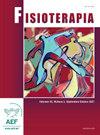Efectos de la exposición gradual al ejercicio y la realidad virtual en un paciente diagnosticado de fibromialgia y agorafobia. Estudio de caso
Q4 Health Professions
引用次数: 0
Abstract
Introduction
Fibromyalgia is characterized by widespread chronic pain associated with various comorbidities.
Objective
The objective of this study was to describe the clinical effects generated by the gradual exposure to exercise and virtual reality in a patient diagnosed with fibromyalgia and agoraphobia.
Methods
A single case study was conducted over a duration of 12 weeks. In the first four weeks, the patient engaged in exercise; during the next four weeks, she was exposed to virtual reality while exercising; and in the final four weeks, the exercise was performed in isolation. Pain perception, psychosocial constructs, central sensitization, pressure pain thresholds, and levels of anxiety and depression were evaluated using different scales.
Results
A reduction in fear of movement was observed, along with a decrease in catastrophic thoughts and levels of central sensitization. However, the subjective perception of pain increased, along with a slight rise in depression levels, while the patient's anxiety decreased by the end of the treatment.
Conclusion
The integration of exercise and virtual reality positively affected various clinical aspects, except for pain perception and depression levels.
逐渐暴露于运动和虚拟现实对被诊断为纤维肌痛和广场恐惧症的患者的影响。案例研究
纤维肌痛的特点是广泛的慢性疼痛,并伴有各种合并症。本研究的目的是描述在诊断为纤维肌痛和广场恐怖症的患者中逐渐暴露于运动和虚拟现实所产生的临床效果。方法采用单例研究,为期12周。在前四周,患者进行锻炼;在接下来的四周里,她在锻炼时接触虚拟现实;在最后四周,实验是在隔离状态下进行的。使用不同的量表评估疼痛感知、心理社会结构、中枢敏感化、压力疼痛阈值以及焦虑和抑郁水平。结果观察到对运动的恐惧减少,以及灾难性想法和中枢敏感程度的减少。然而,在治疗结束时,患者对疼痛的主观感知增加了,抑郁程度也略有上升,而患者的焦虑程度则有所下降。结论运动与虚拟现实的结合对临床各方面均有积极影响,除疼痛感和抑郁水平外。
本文章由计算机程序翻译,如有差异,请以英文原文为准。
求助全文
约1分钟内获得全文
求助全文
来源期刊

Fisioterapia
Health Professions-Physical Therapy, Sports Therapy and Rehabilitation
CiteScore
0.50
自引率
0.00%
发文量
37
期刊介绍:
Publicación Oficial de la Sociedad Española de Fisioterapeutas. Sus páginas ofrecen desde artículos originales hasta revisiones, pasando por el estudio de casos o los actos más importantes relacionados con la especialidad.
 求助内容:
求助内容: 应助结果提醒方式:
应助结果提醒方式:


